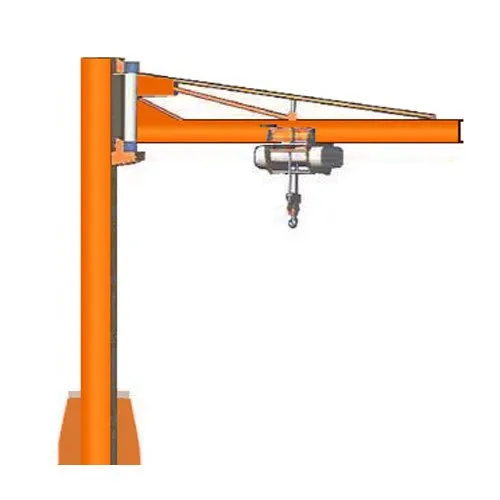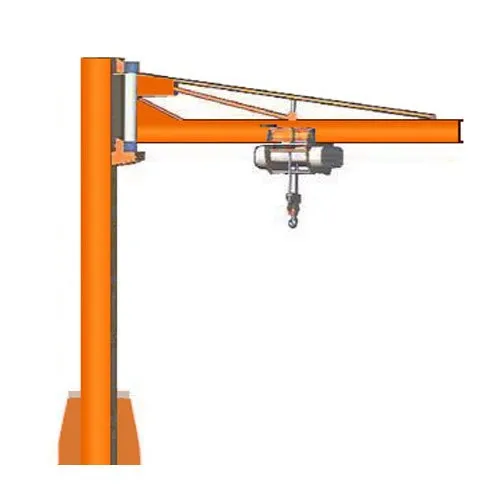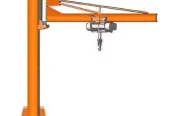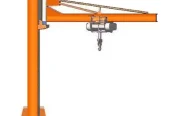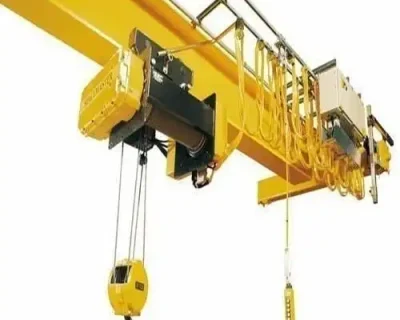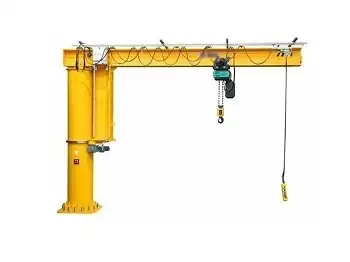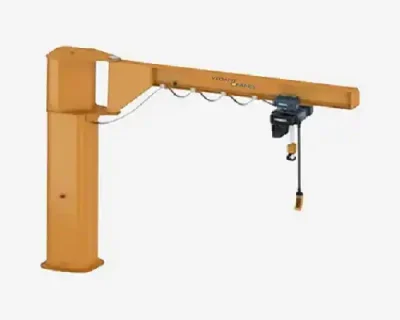Jib Crane
Jib Crane
We are manufacturers, suppliers, and exporters of material handling equipment, especially the Jib Crane. This crane uses high-quality materials. It has a compact design, a rotating jib arm, and versatile lifting mechanisms. As a result, it is ideal for use in warehouses, factories, and construction sites.
Features of Jib Crane
-
Boom:
The jib crane’s most noticeable feature is the arm. It engages horizontally or nearly horizontally. The arm’s purpose is to carry the load. Depending on the crane, the jib arm can be swiveling, fixed, or free at the elbow. This provides flexibility in use. -
Rotation Capability:
Many jib cranes can lift and move at the same time. They can rotate 360 degrees, either manually or with power. This feature increases the crane’s efficiency and range. -
Pillar:
The mast is the vertical structure that supports the jib arm. It allows the arm to pivot or rotate. The mast is usually anchored to the ground or a fulcrum for stability. -
Lifting Mechanism:
Jib cranes have hoists, winches, or chain blocks. These devices help the crane lift and lower loads. They are either on the mast or mounted on the jib. -
Load Capacity:
Jib cranes come in different sizes and designs. Their load capacity ranges from hundreds of kilograms to a few tons. The crane’s design determines its capacity. -
Reach:
The reach of the jib crane is the farthest distance it can lift a load from the mast. The larger the reach, the more area the crane can cover. This gives the crane more flexibility in operations.
Different Categories of Jib Cranes
-
Fixed Jib Crane:
The jib arm in this type is fixed and does not rotate. This provides stability and is ideal for smaller tasks. -
Articulating Jib Crane:
This crane has a joint in the middle of the jib arm. It allows the crane to move more flexibly. This makes it useful in different work environments. -
Wall-Mounted Jib Crane:
This crane is mounted on a wall or building structure. It works best for moving loads within a set space. -
Freestanding Jib Crane:
This crane is fixed to a free-standing pillar or base. It does not need to be attached to a wall. This gives it more flexibility in placement.
Applications of Jib Crane
-
Industries and Workshops:
Jib cranes help lift and move materials or equipment in confined spaces. This increases efficiency in small areas. -
Storage Facilities:
These cranes are used to lift and unload bulky goods. This helps improve workflow in large storage spaces. -
Building Locations:
Jib cranes are ideal for moving light loads where larger cranes cannot fit. They work well in tight spaces. -
Harbors and Marine Terminals:
Jib cranes are used for moving freight and boxes in ports. They ensure smooth and efficient cargo handling.
Visit For More Manufacturers Here


